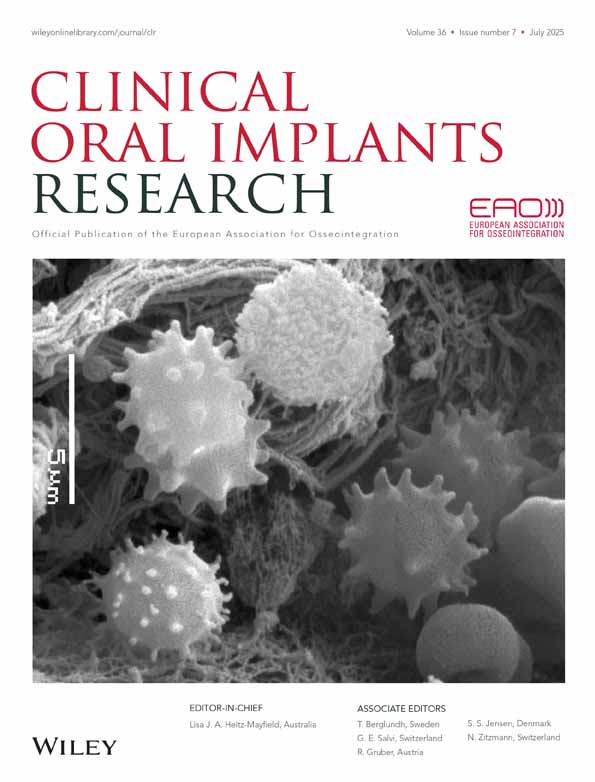Oblique lateral cephalometric radiographs of the mandible in implantology: usefulness and reproducibility of the technique in quantitative densitometric measurements of the mandible in vivo
Abstract
In the literature intraoral periapical radiographs are commonly used for densitometric measurements of the mandible with implants. These films give detailed information of the implant and the surrounding bone. However, in extreme mandibular atrophy it can be difficult to obtain intraoral radiographs of adequate diagnostic quality. Extraoral Oblique Lateral Cephalometric Radiographs (OLCRs) can then be the alternative: reproducible images of large parts of the mandible can be obtained. In vitro, the results of densitometry using periapical films and OLCRs were shown to be similar. The present study aims to determine the measurement error of densitometry with OLCRs in vivo. In 16 patients (group I) with atrophic mandible and implants, duplicate OLCRs of one side of the jaw were obtained. The error of measurement for the densitometric measurements of the mandibular bone was 5.5%. The use of a specially developed correction program to compensate for undesired variations in the projection of the soft tissues of the face (tongue, lips, cheek and neck) on the radiographs resulted in a 40% reduction of that measurement error to 3.5%. This remaining error is mainly brought about by an imperfect repositioning of the patient when the duplicate OLCRs are obtained. The error caused by the image acquisition, processing and measurement is less than 1%. Deliberate variation up to 7.5 degrees of the horizontal angle wherein the OLCRs are made, results in a large error of measurement of 13.5% (group II: 17 patients). To reduce this variation the additional soft tissue correction program is unsuitable. It is concluded from this study that the described radiographic and image analysis technique is a promising tool for prospective densitometric studies of the mandible with or without implants. Especially in mandibles with bone grafts and implants, substantial changes in the graft can occur. The described technique may be particularly valuable in analyzing these changes.




